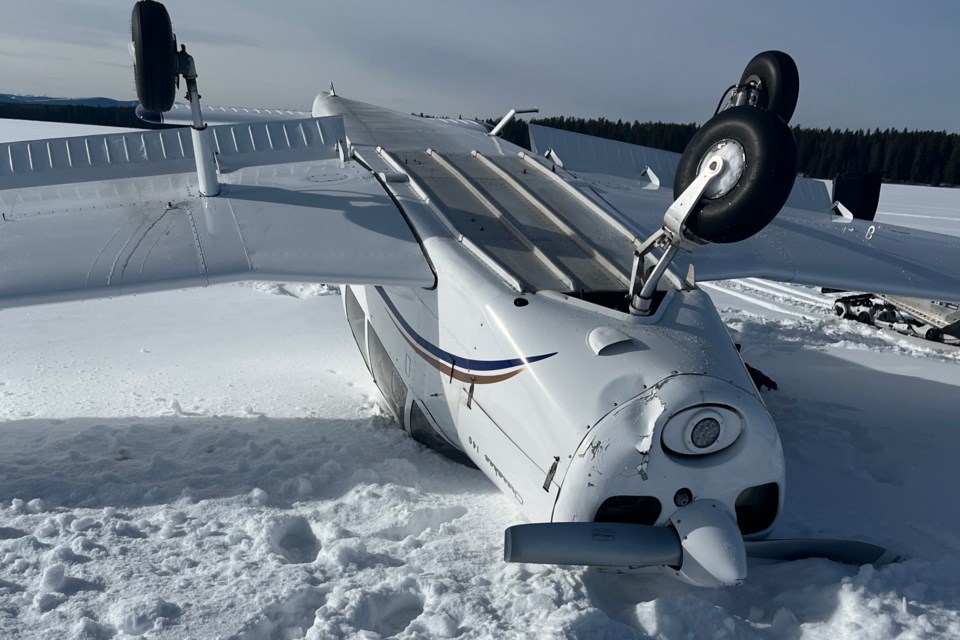SUNDRE – A pilot and lone occupant escaped uninjured on Sunday after crashing his plane at Burntstick Lake.
Sgt. Trent Sperlie, the Sundre RCMP detachment’s commander, said the incident was reported at about 2 p.m. on Feb. 11.
“There was no injuries and he was able to walk away,” Sperlie said the next morning in response to follow-up questions.
The small aircraft involved was reportedly a Piper PA28. The pilot, a 40-year-old male with the most recent address on file being from Red Deer, was flying through the area, Sperlie told the Albertan, adding he did not know what the pilot’s flight plan was.
“He was making low passes on the lake and he got too low and the landing gear caught,” said Sperlie.
“The snow grabbed the landing gear and flipped him over,” he said, adding the investigation is ongoing and that federal aviation authorities will also be looking into the situation.
“There hasn’t been any determination of wrongdoing yet,” the sergeant said in response to being asked if the pilot had perhaps been stunting by flying at such dangerously low altitudes.
Sperlie added federal aviation authorities with Transport Canada “would investigate the flying behaviour."
“We would work with them on that investigation and if there is indeed anything wrong, then charges could be laid. I don’t know what those charge would be at this point.”
Although there was no one else in the plane, there were some people out at the lake, he said.
“There were ice fishermen out there,” he said, adding no one on the ground was injured either.
A spokesperson with the Transportation Safety Board (TSB) said the crash was categorized as a Class 5 occurrence, which “are not subject to comprehensive investigations followed by an investigation report.
“However, data on Class 5 occurrences are recorded in suitable scope for possible future safety analysis, statistical reporting, or archival purposes.”
The TSB’s mandate is “to conduct independent investigations into the air, marine, pipeline and rail sectors to identify safety deficiencies and make recommendations to advance transportation safety,” but the agency “does not assign fault, blame or criminal liability.”
In Canada, aircraft pilots must comply with regulations as outlined in the Aeronautics Act as well as Canadian Aviation Regulations (CARs). Those regulations outline minimum altitudes and distances as well as aircraft operating procedures.
“Except when taking off or landing, aircraft may not be operated over a built-up area at an altitude lower than 1,000 feet (305 metres) above the highest obstacle within a horizontal distance of 2,000 feet (610 metre) from the aircraft, or 500 feet (152 metres) for helicopters,” reads part of an email response received on Feb. 13 by a Transport Canada spokesperson in response to questions submitted by the Albertan.
“When not operating over a built-up area, aircraft must maintain a minimum distance of 500 feet (152 metres) from any person, vessel, vehicle or structure.”
However, the regulations do allow for certain permissible exceptions for low-altitude flights “depending on the purposes of the operation in which the aircraft is engaged, and the aircraft is operated without creating a hazard to persons or property on the surface.”
Allowable exceptions include operating the aircraft:
• for the purpose of a police operation that is conducted in the service of a police authority;
• for the purpose of saving human life;
• for firefighting or air ambulance operations;
• for the purpose of the administration of the Fisheries Act or the Coastal Fisheries Protection Act;
• for the purpose of the administration of the national or provincial parks; or
• for the purpose of flight inspection.



